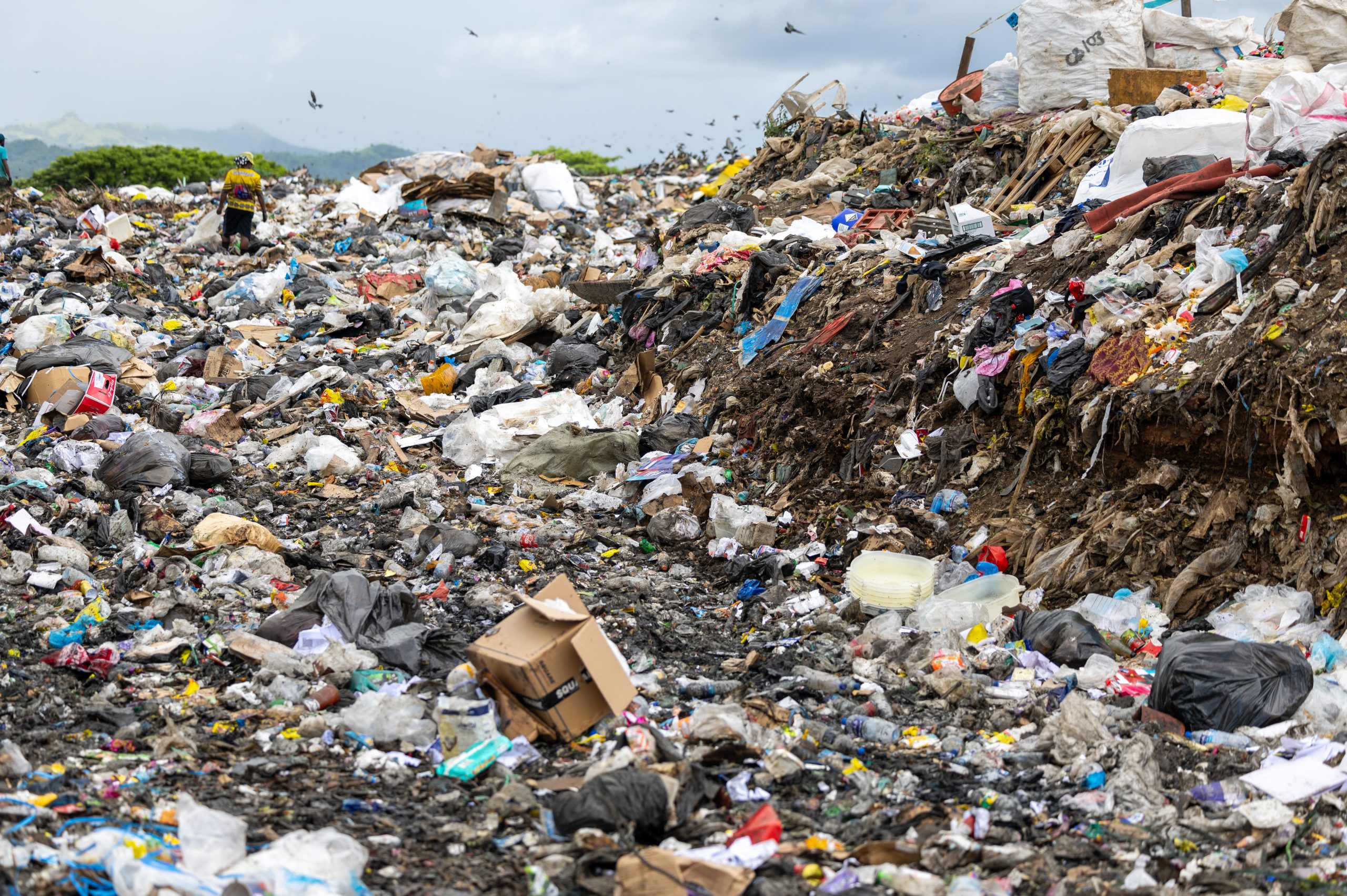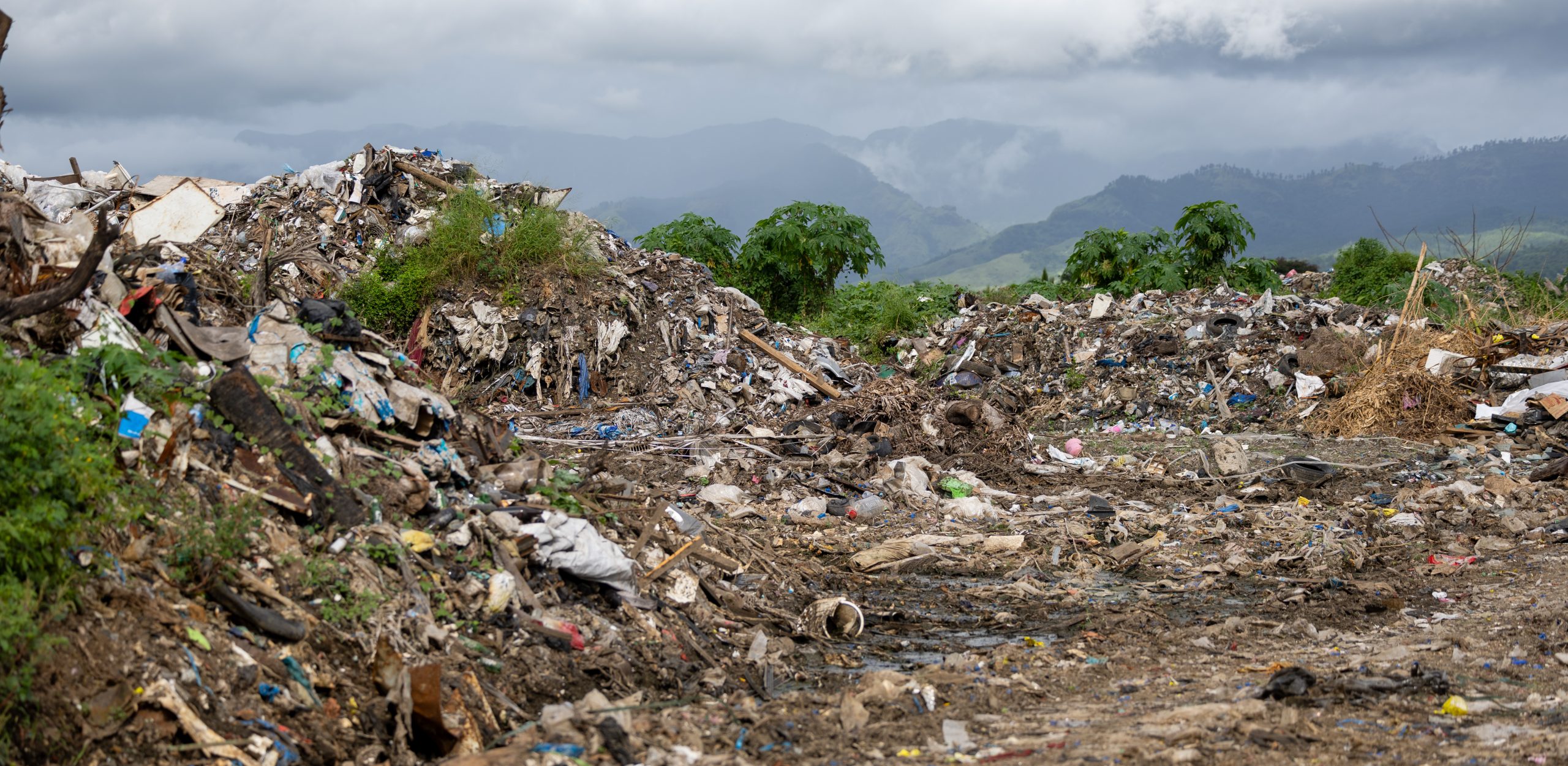Local Government Minister aware of concerns, assures that works on dump relocation and a paper to address waste management issue in Fiji begins.
By INOKE RABONU
The Vunato rubbish dump in Lautoka has long been a vital waste disposal site, but it has recently come under scrutiny for a hidden and dangerous threat: hazardous toxic gas emissions from frequent dump fires.
Once or twice a year the dumpsite catches fire, that is the trend according to local residents.
When this happens, the toxic smoke covers Lautoka city, transmitting into residential areas, schools and even the main Lautoka hospital.
Dr Francis Mani, a Senior Lecturer of Environmental Chemistry at the University of the South Pacific, has raised alarms about the serious health and environmental risks posed by these fires, shedding light on a problem that extends far beyond the dump’s borders.
The Ministry of Health has recommended that the dump be relocated, citing its direct impact on public health as the dump poses significant environmental hazards, further exacerbating health risks for surrounding communities.
Methane: The Combustible Culprit
The Vunato dump has been in operation for many years serving as the primary waste disposal site for Lautoka and surrounding areas. However, Fiji’s lack of waste segregation means that all types of waste—organic, plastic, metal, and more—end up in the dump.
According to Dr Mani, this mixed composition is a significant problem, particularly when organic matter undergoes anaerobic decomposition due to insufficient oxygen, producing methane gas.
Methane, a highly combustible gas, is a byproduct of the anaerobic decomposition process in landfills.
“Methane, combined with the oxygen present, creates a perfect environment for fires. A simple spark, such as a discarded cigarette, can lead to explosions and widespread fires,” Dr Mani said.
“Most of the waste composition is organic in nature, so when it actually ends up in the dump and they undergo what you call anaerobic decomposition that’s when there is not enough oxygen to break down the organic matter, it actually produces methane gas,” he said.
They produce this landfill gas which is methane, methane is very combustible.
“It has methane in there, it has oxygen so it has the right sort of fuel for fire.”
He said these fires were not new occurrences at the Vunato dump, but their frequency and intensity would be growing concerns.
“The combustible nature of methane makes managing these fires challenging, requiring not just physical measures but also educational initiatives to inform workers and locals about the dangers.”

Health Impacts of Toxic Emissions
Although no specific studies have been conducted on the pollutants emitted by the Vunato dump, existing literature provides an unattractive picture.
“The composition of the smoke and toxins released depends on the type of waste burned,” Dr Mani said.
He added that commonly released gases when waste is bunt include carbon monoxide, hydrogen sulfide, sulfur dioxide, and particulate matter, particularly PM2.5, which is extremely harmful to human health.
“PM2.5 particles are tiny, capable of penetrating deep into the lungs and entering the bloodstream, leading to severe respiratory problems such as asthma, bronchitis, and even cardiac issues,” he said
He added that studies conducted in Lautoka have shown elevated levels of PM2.5, far higher than those in Suva, attributed to the drier climate and higher pollution sources, including older vehicles and industrial activities.
The Dangers of Plastic Burning
The burning of plastic waste has become an alarming aspect of dump fires, says Dr Mani.
“When plastic burns, it releases dioxins and furans—chemical compounds that are potentially carcinogenic,” Dr Mani said.
“These persistent organic pollutants can cause long-term health issues, including cancer, adding another layer of danger to the already toxic mix of emissions,” he added.
To reduce the frequency and impact of dump fires, Dr Mani has advocated for better waste management practices.
“Education is key,” he emphasised.
“Workers and the community need to understand how easily these fires can start and the toxic nature of the gases produced.
“Proper waste segregation, composting organic waste, and recycling can significantly reduce the amount of combustible material in dumps.”
Additionally, Dr Mani pointed out successful models such as the Naboro landfill, where waste was compacted in layers of soil, minimizing oxygen and reducing the risk of fires.
He said implementing similar practices at the Vunato dump could help mitigate fire risks.
Community and Policy Recommendations
Dr Mani has worked with municipal councils in Fiji to develop strategies for reducing greenhouse gas emissions and improving waste management.
“Changing the mindset of the people is crucial,” he said.
This included educating communities living around the dump, some of whom depend on it for their livelihoods, about the health risks and the importance of proper waste disposal practices.
He added that ongoing studies were also examining heavy metal contamination around the Vunato dump, reflecting the long-term environmental impacts of poor waste management.
Dr Mani said these studies aimed to provide a clearer understanding of the contamination levels and inform future policy decisions.
The fires at the Vunato dump represent a significant public health and environmental hazard.
Dr Mani’s research and advocacy highlight the urgent need for improved waste management practices and community education.
By addressing these issues, Fiji can move towards a safer and healthier future, reducing the risks posed by toxic gas emissions from dump fires.
INFORMATION ABOUT VUNATO RUBBISH DUMP
• The Lautoka Vunato Open Aerobic and Evaporation dumpsite was commissioned in 1968.
• Initially, the landfill was to serve Fiji Sugar Corporation and Lautoka City citizens. Now, the landfill caters to the whole of Lautoka City (citizens, businesses, schools, offices, NGOs, hotels, etc), the whole of Nadi town, rural areas towards Ba and Nadi, Islands (Yasawa, Malolo, Mamamuca), Denarau (all Hotels), etc.
• Since its commissioning, the Aerobic dumpsite has been managed by Lautoka City Council and has a total area of 50 acres.
• Vunato disposal site is located at the north end of Lautoka City developed in the mangrove facing the sea on a state foreshore reserve.
• The landfill has a fully computerised weighbridge system whereby disposal fees are charged based on the weight of waste, category of waste and origin of wastes.
• Lautoka City Council operates and manages waste disposal services from its facility at Vunato.
• The facility has a total of six waste disposal cells, a special waste disposal area, a green waste disposal/chipping area and a composting facility.
This is the last of a three-part series highlighting the health and environment threat posed by the Vunato rubbish dump. The feature was supported by the Earth Journalism Network through the Pacific Islands News Association (PINA)















